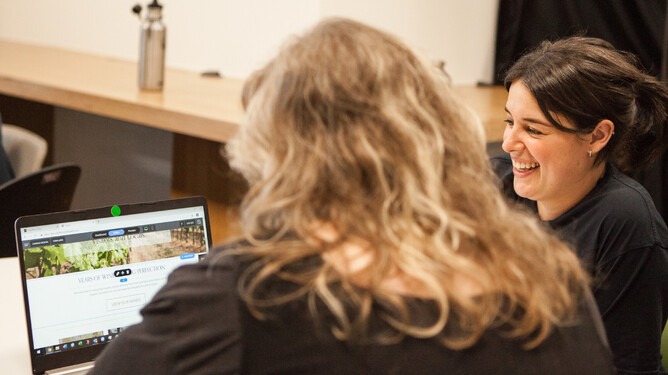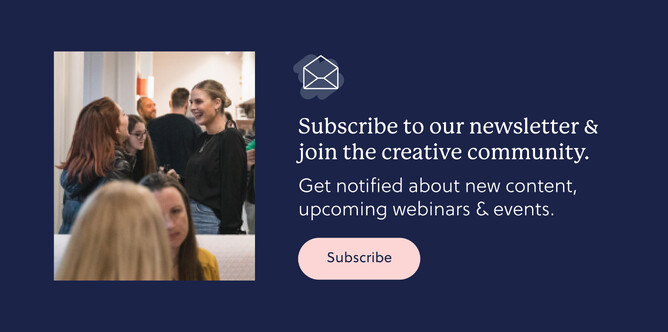Do you struggle with gathering content from your clients? It can be a huge hindrance for graphic designers who are trying to move forward with a project. Someone who knows this very well is Grant Johnson, co-founder and CEO of Rocketspark. Rocketspark used to manage their own design projects and are very familiar with trying to gather content from clients and having all content and feedback come flying in at once on a Friday afternoon before a holiday weekend. Over time, Grant and their little team were able to refine the content gathering process and found the web projects became so much more enjoyable for both designer and client. Grant shares his learnings and insights from his years at the coalface of a web design biz with you below.
Setting the scene
In the early days of Rocketspark, we used to design projects ourselves and getting content from clients was always a real pain point. We were a small team and really relied on keeping projects moving to be able to pay the bills. Over the years we continuously refined the web creation project process and learnt a huge amount about the value of continually making little tweaks to the process. These changes meant we felt so much more in control of the projects. Being more in control provided a much more delightful experience for clients which led to fantastic word of mouth referrals. Of course, the challenges didn’t completely go away but the delays in content delivery became much more manageable.
At Rocketspark we'd have up to 30 web design projects on the go at any one time with a small team of just an account manager and a designer. In the early years we created bespoke templates too so a developer was also involved. Once the Rocketspark platform could achieve what the designer wanted without any custom code the developer moved to working with the rest of the dev team on developing our website builder. With lots of new projects on the go plus ongoing work from existing clients we worked hard to get the process right, enabling us to operate at scale and maintain high standards.
A process of continuous refinement and documenting the process
The key learnings that I’ll share below came from many years of responding to different client situations. Our improvements were a process of continuous refinement. When we improved the process we’d capture the new or refined steps in our project template. For example, once we finished the site and got to the go live point we would ask the client about their domain name and they wouldn’t know who managed their domain or how to access it. We learnt early on to ask the client about their domain details at the start of the project and we would have a to-do in our project template to ask the question early. We ensured to always capture the details directly in our project management tool (we use Asana).
Having a standard process for explaining to the client what content is needed and providing templates for content gathering helped a lot. We had templated emails saved in Asana which saved a lot of time and we also used Google Doc templates with guidance to the client on gathering the content. The templated emails were simply emails we’d already sent other times to clients which we copied and saved in the template so there was not much extra work to create the templated to-do item.
Our project template had 119 individual to-dos and while it may seem like a lot, we found that gaps in the process had a bigger cost and having detailed project to-dos helped us spend less time thinking or worrying about what we might have forgotten to do.
Getting a chunky deposit relieves some pressure and the client commits
When we first started we were so naive and trusting and we didn’t even ask for a deposit! It wasn’t long before we implemented a 20% deposit and then moved to a 50% deposit before the project started. The initial meeting and quoting stage was a key time to build trust so by the time we asked for the deposit it was rarely an issue for clients to pay 50%. Those that quibbled over the amount inadvertently raised a red flag that they were more likely to be difficult to work with.
We were super reliant on the cash flow from these design projects so getting the 50% deposit relieved a lot of pressure to get a project moving. We then required a 25% progress payment after the home page design was signed off. Getting a good deposit meant the client was more likely to be committed to the project. Chantelle and Leah at Varntige take things a step further and offer a small discount for 100% payment up front. This is a genius move as it removes all the cashflow pressure in order to get a project moving.
Don’t start the design until content is provided - at least the home page
We wouldn't start the design until we had all of the home page content ready to go. We didn’t design any more pages until the home page was signed off and the rest of the site’s content was received. Sometimes we'd be tempted to make a start as we felt we knew what they wanted but it normally came back to bite us in the bum with many more revisions resulting in client frustration. We became very firm on not starting without content. This home page design approach worked for us as we found that by getting the client to commit to the home page content initially, it enabled us to get it right and help with content direction for the rest of the site. It’s important to note here that we generally focussed on simple informational websites of 5-10 pages and simple ecommerce sites so we’d generally have a fair idea of what the remaining content for the site was likely to be like.
Make it easy for clients to adopt professional content providers
Working with professional content providers such as copywriters, photographers and videographers made the design process so much more enjoyable as the content creator would share the role of content gathering. In our case we engaged these providers on behalf of the client and the client would work directly with them.
These content providers became true partners and friends of Rocketspark and made our web design life much more enjoyable. We worked with these content providers to provide standardised packages which made it easy for us to sell the content packages to the client right at the start of the project. We see a number of designers forming little virtual agencies of designer, writer, photography and SEO specialists. We've seen this approach work really well.
Working with great copywriters meant that the key components of SEO (keywords on the page and in headings) were typically done as part of the writing process and the content would be nicely structured with heading hierarchies which made the design process much easier and so much more efficient which made the project more efficient, enjoyable and profitable.
Some of our most experienced Rocketspark designers will only work with clients who agree to having the words professionally copy written as they have reached a point in their business journey where they can choose the clients they work with and they know that professionally prepared content will make the project so much more enjoyable with a higher quality result.
Be clear with time frames and set expectations
We had so many projects on the go at once so if a client missed a deadline and suddenly delivered the content at a later time it would create a lot of pressure. We’re super customer focussed and we felt an obligation to respond speedily when the client finally delivered the content - it wasn’t fun trying to squeeze everything in especially when it would miraculously all seem to arrive for different projects.
We learnt to manage expectations up front by saying something along the lines of “We’ve scheduled X day to start your design. For us to begin work on your project we need X, Y and Z from you before this date. As we have a lot of projects on the go at the moment we need the content by that date otherwise we’ll need to reschedule the project and can’t guarantee the next available design window until the content is received”.
By setting expectations up front it alleviated the pressure on us because the ball was in their court. The client also felt in control as it was on them to deliver the content if they wanted the project delivered on time.
A great example of setting expectations from the client’s perspective came from my sister-in-law, Nic. Nic has a lovely website designed for her bakery called Elspeth. Nic engaged Liz from LW Creative for the web design and Amanda from Quick Brown Fox to write the content. As a busy baker who often starts her day at 3:30am, working on a website can be a challenge. Nic made a specific mention of how she really liked the clear deadlines from Liz and Amanda - they were polite but firm on the need to meet the timeframe. Both designer and writer were super clear with standardised processes which gave Nic confidence in working with them.
Use tools to gather content
We were somewhat unsophisticated in our content gathering tools but they did help us. We’d invite the client to a Dropbox folder which we’d set up for them to drop their photos into. By creating a subfolder structure that matched their website it prompted the client to think about which images they’d recommend for each page which also saved us some time trying to work out where the images might best fit.
For clients that were preparing their own website copy we’d prepare a Google Doc content gathering template with some basic prompts for what to include on each page and the collaboration tools within Google Docs were great for seeking clarification on the content with the client. While it required a little extra effort to add the prompts into the doc it would help to steer the client in the right direction.
We’d stopped designing websites ourselves before we came aware of content gathering solutions like File Invite or Content Snare. It is interesting to note that these platforms were developed by digital agencies who thought there must be a better way to get content from a client. You are definitely not alone in experiencing content gathering headaches and tools like these could be worth a look!
I hope these learnings are helpful for you. They really made a difference to our enjoyment of the projects and greatly improved the profitability of the projects as we refined our processes.
Content gathering from despair to delight
A massive thank you to Grant from Rocketspark for sharing his insights and learnings from over the years. Grant showed us the importance of having an effective content gathering process in place and setting expectations from the get go to avoid dealing with those red flag clients. Don’t be shy to post in the Creative Launchpad Facebook group - there is a great community of people in the same boat who are willing to share their learnings from the school of hard knocks to help you out.




